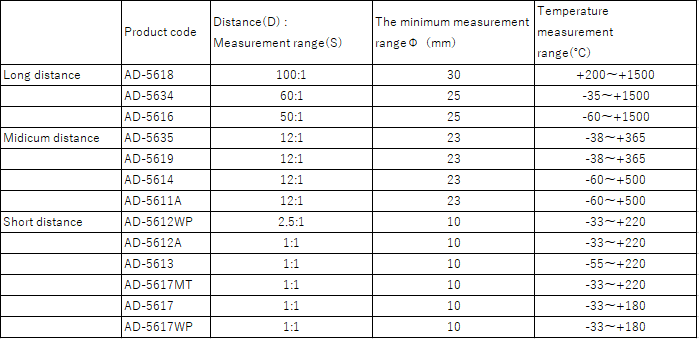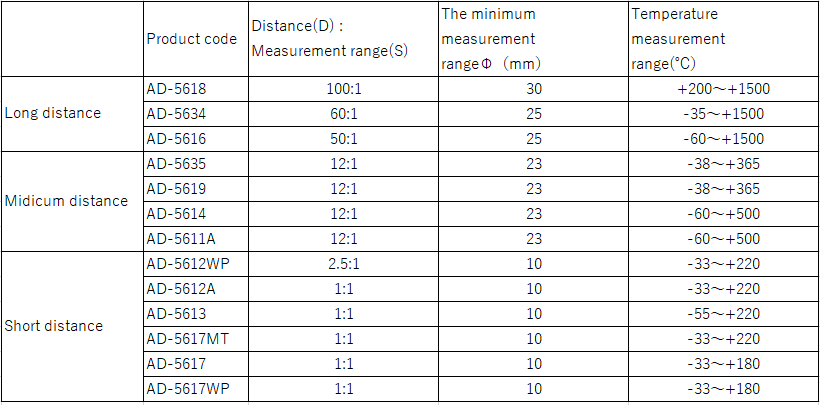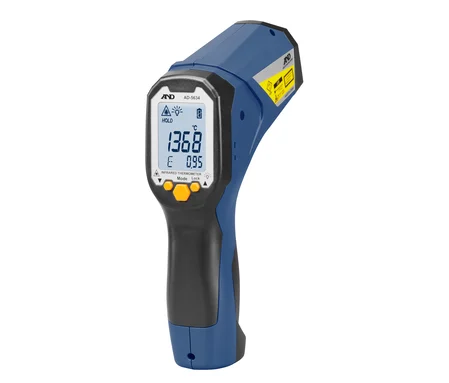AD-5635 How to choose an infrared thermometer

Your choice of infrared thermometer will depend on the size of and distance to the target object being measured.
When selecting an infrared thermometer, we recommend paying attention to four points:
①D:S (Distance : Measurement range)
②Minimum measurement range
③Presence of emissivity adjustment function.
④Temperature measurement range(℃)
The table below lists A&D’s lineup of infrared thermometers. (Created based on actual measured values)
The D:S ratio, minimum measurement range and temperature measurement range of each model are shown:

If you require temperature measurement from a longer distance under high temperatures,
you can select one of the “Long distance” thermometers listed in the table.
We also offer compact and portable options that are easy to carry and which are suitable for shorter distance measurements.
Or, if you need to measure temperatures from a medium distance, we also supply products designed for
this which enable contactless measurement.
For example, when measuring the temperature within a range of 5 cm in diameter:
With the AD5616, the possible measurement distance is within 2.5 m.
With the AD5635, the possible measurement distance is within 60 cm.
With the AD5613A, the possible measurement distance is within 5 cm.
Additionally, other selection criteria include the shape and waterproofness.

With a gun-type infrared thermometer, you can reduce the impact of heat radiated from the user’s hand on the sensor.
Furthermore, the built-in laser marker allows easy identification of the temperature measurement area.
However, please note that the laser from a single-point laser marker only indicates the center of the measurement range.
A dual-point laser marker indicates both ends of the measurement range with markers.

With a compact infrared thermometer, you can check temperatures easily.
We also have options available in splash-proof and waterproof types.
Please choose an infrared thermometer suitable for your specific application,
whether it be for use in machinery or equipment, food-related purposes, fishing, ironworking, or many other uses.
